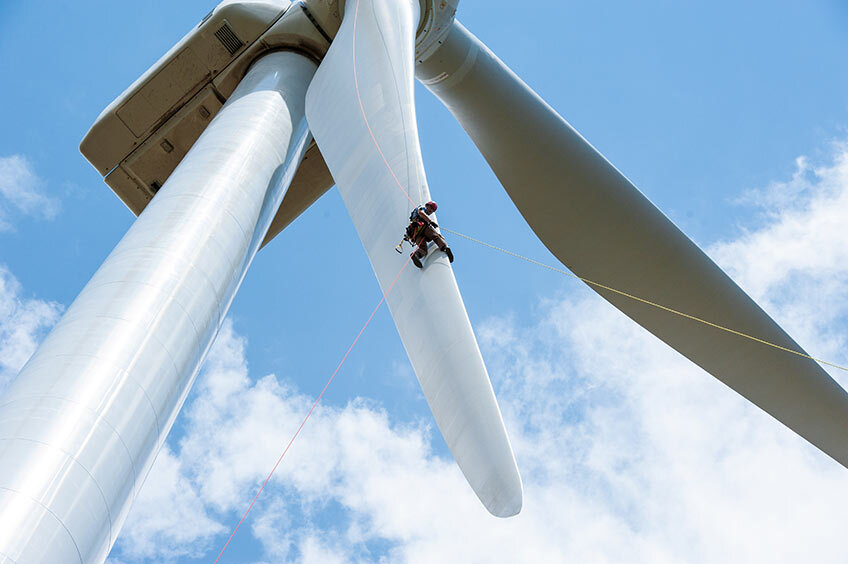
Researchers from the U.S. Department of Energy's (DOE's) National Renewable Energy Laboratory (NREL) and Sandia National Laboratories are searching for ways to maximize the advantages of large-scale rotors and their potential for increased energy generation. Their work as part of DOE's Big Adaptive Rotor (BAR) project aims to create the next generation of land-based wind turbines with 206-meter rotors, which will increase capacity factors by 10 percent or more over a typical land-based turbine.
To put this in perspective, a rotor of that magnitude would measure more than 225 yards, or about the length of two football fields. But why does supersizing turbine rotors matter?
The past few decades have seen substantial reductions in the cost of wind energy largely because of increases in rotor size. Increases in rotor size on the same machine rating lead to low-specific-power turbines that can reduce the cost of wind energy by creating a greater swept area which helps wind power plants more consistently capture wind energy, as well as access higher wind speeds at elevated heights. But the length and weight of these blades create science, engineering, logistical, and manufacturing challenges that currently prevent scaling turbines up to sizes that make true on the adage, bigger is better.
"The overall goal for BAR is to enable large-scale, low-specific-power turbines for land-based application," said Nick Johnson, an NREL research engineer and principal investigator on the BAR project. "To make this happen, we need to overcome manufacturing, transportation, and logistical challenges with novel solutions. One area where we can help enable this technology is to resolve science and engineering difficulties related to the design and operation of large slender and flexible blades challenges related to blade dynamics, modeling, materials, loading, and controls."
These science and engineering obstacles are at the core of a recent NREL and Sandia study. BAR researchers provide qualitative analysis assessments of rotor concepts based on performance metrics and the science and engineering challenges related to each concept.
For example, weight-reducing strategies can lessen both fatigue and extreme loading on turbine blades that result in higher blade loads and maintenance costs. Concepts like distributed aerodynamic controls enable weight reduction by reducing ultimate and fatigue loads on longer, more flexible blades, but introduce controls, manufacturing, and reliability issues. Detailed analysis of advantages and disadvantages helps researchers understand these tradeoffs and identify where breakeven points for varying technologies exist.
To help clarify and better articulate the science and engineering hurdles facing potential turbine concepts, researchers are using NREL's turbine design models OpenFAST and the Wind-Plant-Integrated System Design and Engineering Model (WISDEM) to model turbine performance and turbine system-level interactions.
As wind plant owner-operators look for greater revenue from improved power reduction, low-specific-power machines will continue to grow in popularity because of their ability to produce more electricity over more hours and will be dispatchable when power is needed the most. Through illumination of underlying science and engineering challenges for larger turbine rotors, BAR researchers help make the giant land-based wind turbines of tomorrow possible today.
More information:
Johnson, Nick et al. Investigation of Innovative Rotor Concepts for the Big Adaptive Rotor Project. Golden, CO: National Renewable Energy Laboratory. NREL/TP-5000-73605.
www.nrel.gov/docs/fy19osti/73605.pdf
Citation: Pushing the boundaries of land-based rotor growth (2019, December 3) retrieved 3 December 2019 from https://techxplore.com/news/2019-12-boundaries-land-based-rotor-growth.html
This document is subject to copyright. Apart from any fair dealing for the purpose of private study or research, no part may be reproduced without the written permission. The content is provided for information purposes only.
